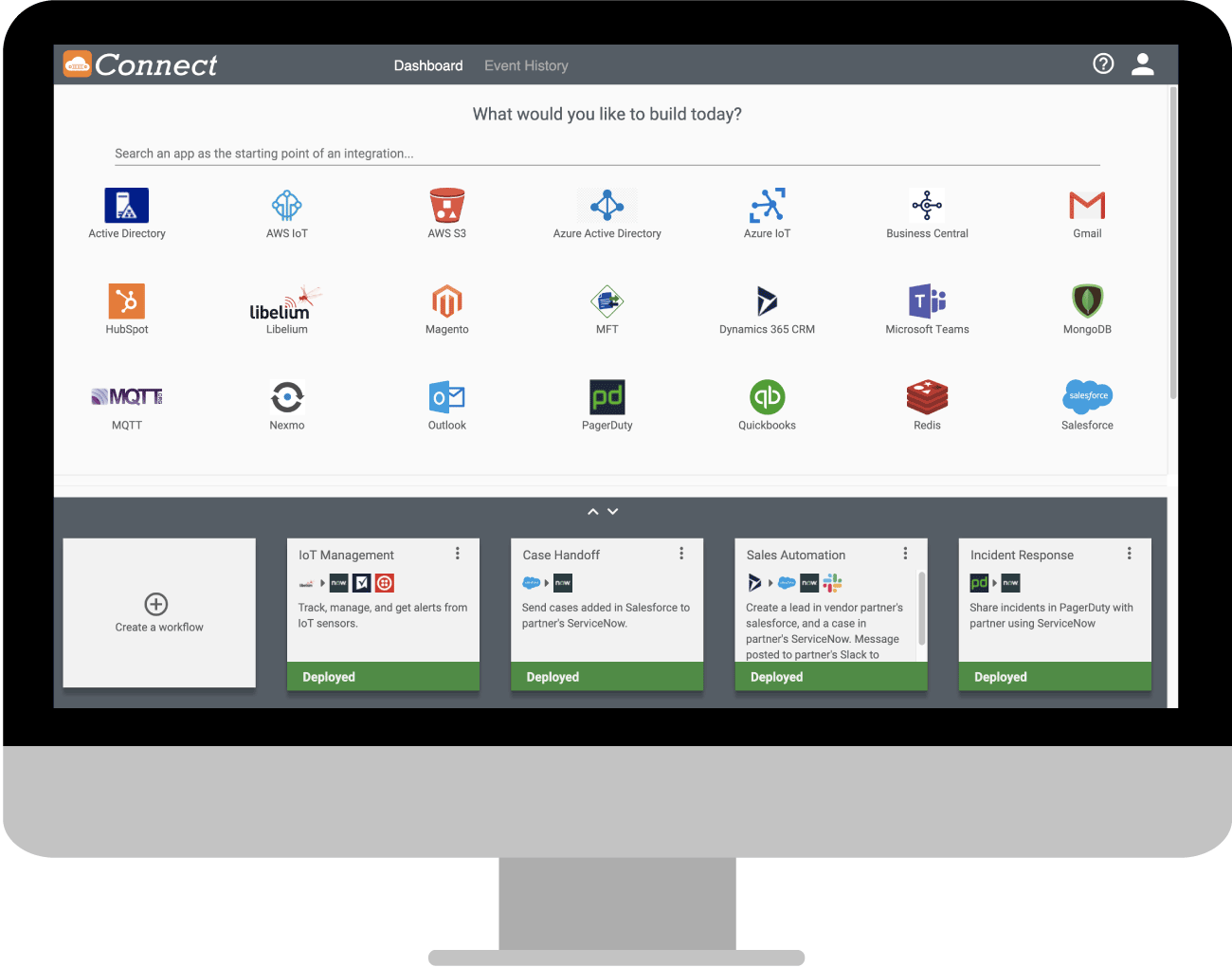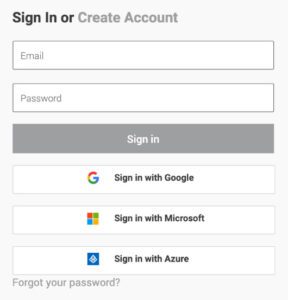Maximize Business Benefits with Active Directory Integration
Integrate Microsoft Active Directory with SaaS and enterprise applications for a best-of-breed solution.
Recognized as an Emerging iPaaS and Hybrid Integration Platform (HIP) Provider by Gartner, Forrester, and MarketsandMarkets.
Maximize the business Benefits of Microsoft Active Directory
Integrate Microsoft Active Directory with SaaS and enterprise applications for a best-of-breed solution.
Recognized as an Emerging iPaaS and Hybrid Integration Platform (HIP) Provider by Gartner, Forrester, and MarketsandMarkets.
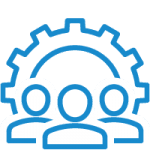
Optimize Employee Lifecycle Management
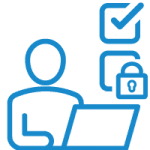



Real-Time Role-Based Access Control
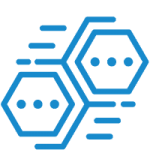



Design, Deploy & Edit Flows Easily




Optimize Employee Lifecycle Management




Real-Time Role-Based Access Control




Design, Deploy & Edit Flows Easily












Optimize Employee Lifecycle Management
Real-Time Role-Based Access Control
Design, Deploy & Edit Flows Easily
Checkout Microsoft Active Directory API and data connectors on Connect iPaaS
Active Directory Use Cases


Reduce the Time Spent Onboarding New Employees
When a new employee joins a company, HR teams will enter his or her personal information into the Human Resource Management System (HRMS), such ADP or Workday®. After doing this, a service desk ticket is typically created for a system administrator to provision the new employee in Microsoft Active Directory (AD).
Utilizing Connect iPaaS eliminates the need to manually create and update identities in AD once the employee record has been created in ADP or Workday®. When the employee record is created or updated in ADP or Workday® it is then synced to AD to create or update the user’s mapping groups. As a result, employee data can be synced instantly, saving hours of valuable time.
Reduce the Time Spent Onboarding New Employees


Utilizing Connect iPaaS eliminates the need to manually create and update identities in AD once the employee record has been created in ADP or Workday. When the employee record is created or updated in ADP or Workday it is then synced to AD to create or update the user’s mapping groups. As a result, employee data can be synced instantly, saving hours of valuable time.
Efficient Asset Management Upon Onboarding
Employee onboarding is a time-consuming process. The time it takes to get a new hire account created in Workday® and his or her identity created in AD is only one aspect of this. Assigning the new hire a company email, business accounts, and company assets, such as a computer, all takes time and coordination from multiple teams within the company.
With Connect iPaaS you can create workflows to automatically alert the necessary teams of what accounts and assets need to be created or allocated once his or her identity has been created in AD. ServiceNow, JIRA, Twilio, and Slack can all be utilized as connectors in Connect iPaaS to integrate with AD to set up these service desk tickets and alerts, thus streamlining the process to assign assets for new hires.


Efficient Asset Management Upon Onboarding


With Connect iPaaS you can create workflows to automatically alert the necessary teams of what accounts and assets need to be created or allocated once his or her identity has been created in AD. ServiceNow, JIRA, Twilio, and Slack can all be utilized as connectors in Connect iPaaS to integrate with AD to set up these service desk tickets and alerts, thus streamlining the process to assign assets for new hires.


Save Time Creating New Accounts in Enterprise Applications
Integrating ADP or Workday® to create identities in AD is just one part of streamlining the employee onboarding process. Further downstream provisioning of Role-Based Access Control (RBAC) into other essential productivity tools and enterprise applications like sales, operations, and resource management must take place based on the rights and privileges of the employee. Reliance on this manual method is inefficient, time-consuming and can leave room for human error.
Utilizing Connect iPaaS to integrate AD with various enterprise applications solves this problem. For instance, when an employee identity is created in AD, a new account can be created in Salesforce, Microsoft Dynamics CRM, Office 365, and other required productivity and collaboration tools. This integration allows for new employees to receive their account credentials on their first day and hit the ground running without any extra work from IT teams.
Tighten Security by Disabling Terminated Employees Faster


Utilizing Connect iPaaS to integrate AD with various enterprise applications solves this problem. For instance, when an employee identity is created in AD, a new account can be created in Salesforce, Microsoft Dynamics CRM, Office 365, and other required productivity and collaboration tools. This integration allows for new employees to receive their account credentials on their first day and hit the ground running without any extra work from IT teams.
Tighten Security by Disabling Terminated Employees Faster
When an employee is terminated, hours or even days can go by before privileged access to data and cloud-based applications is revoked. This could result in a security breach as the terminated employee has enough time to access, steal, and share confidential company information.
By having AD integrated with either ADP or Workday®, terminated employees can be disabled from organizational units (OU’s) and secure groups much faster than relying on manual methods to perform this process. This substantially cuts down the access window of a termination accessing sensitive data, thereby better protecting your company from a breach.


Save Time Creating New Accounts in Enterprise Applications


When an employee is terminated, hours or even days can go by before privileged access to data and cloud-based applications is revoked. This could result in a security breach as the terminated employee has enough time to access, steal, and share confidential company information.
By having AD integrated with either ADP or Workday, terminated employees can be disabled from organizational units (OU’s) and secure groups much faster than relying on manual methods to perform this process. This substantially cuts down the access window of a termination accessing sensitive data, thereby better protecting your company from a breach.
Why Choose RoboMQ?
Integrate your business at a price that can't be beat.
Connect your enterprise applications and partner systems to streamline your business.
Create many-to-many event driven API integration flows with SaaS, ERP, CRM and third-party applications.
Leverage the power and scale of cutting-edge technologies like containers and microservices in a simple, intuitive no-code, drag and drop UX.
RoboMQ is not affiliated, associated, authorized, endorsed by, or in any way officially connected with any of the third-party application systems. All product and company names are the registered trademarks of their original owners. The use of any trade name or trademark is for identification and reference purposes only and does not imply any association with the trademark holder of their product brand.
Testimonial



